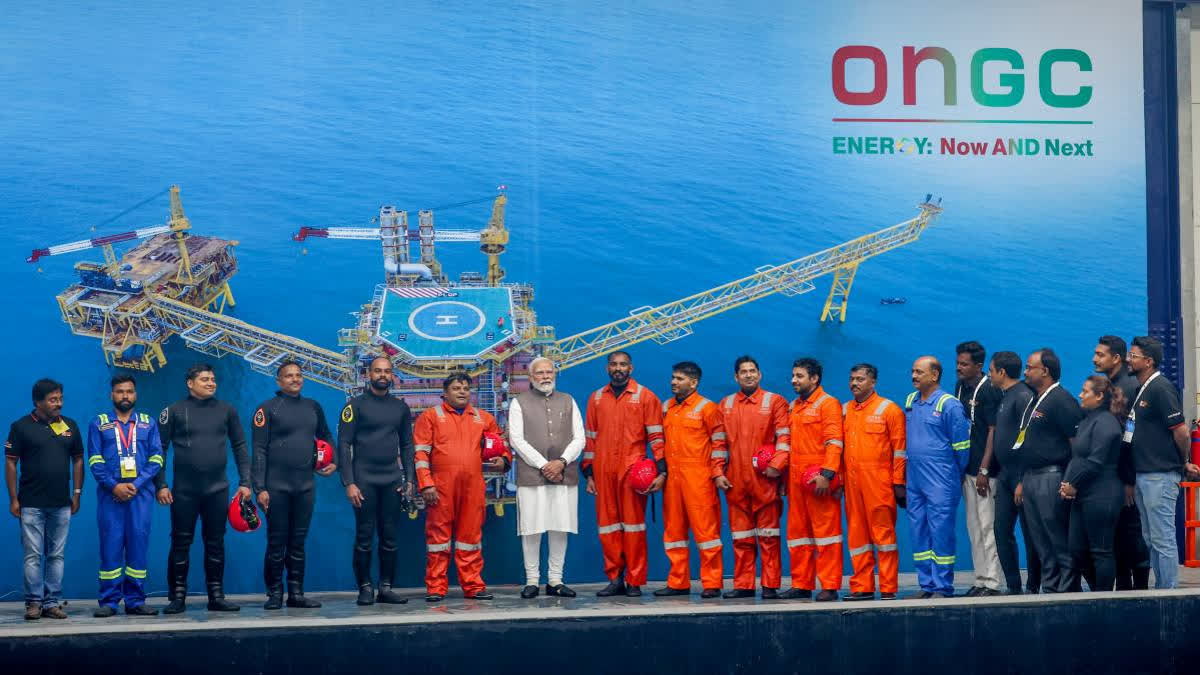New Delhi: August 14 every year is marked to observe the foundation day of India's public sector undertaking (Oil PSU) Oil and Natural Gas Corporation Limited (ONGC). The ONGC comes under the Ministry of Petroleum and Natural Gas.
History & Significance
During pre-independence, the Assam Oil Company in the North-Eastern and Attock Oil Company in the North-Western part of undivided India were the only oil companies producing oil in the country. The major part of Indian sedimentary basins was deemed to be unfit for development of oil and gas resources.
In 1955, the Centre decided to develop the oil and natural gas resources in the various regions of the country as part of public sector development. With this objective, an Oil and Natural Gas Directorate was set up in 1955 under the then Ministry of Natural Resources and Scientific Research. The department was constituted with a nucleus of geoscientists from the Geological Survey of India.
Soon, after the formation of the Oil and Natural Gas Directorate, it became apparent that it would not be possible for the Directorate with limited financial and administrative powers to function efficiently. So, in August 1956, the Directorate was raised to the status of a commission with enhanced powers.
Thus, ONGC was founded on August 14, 1956, by the Government of India. It is the largest government-owned oil and gas explorer and producer in the country and produces around 70 per cent of India’s domestic production of crude oil and around 84 per cent of natural gas. ONGC is vertically integrated across the entire oil and gas industry. In November 2010, the Government of India conferred the Maharatna status to ONGC.
ONGC’s Exploration
Since its inception, ONGC has been instrumental in transforming the country’s limited upstream sector into a large viable playing field, with its activities spread throughout India and significantly in overseas territories. Domestically, ONGC not only found new resources in Assam but also established a new oil province in the Cambay basin (Gujarat), while adding new petroliferous areas in the Assam-Arakan Fold Belt and East coast basins (both inland and offshore).
ONGC went offshore in the early 70’s and discovered a giant oil field in the form of Bombay High, now known as Mumbai High. This discovery, along with subsequent discoveries of huge oil and gas fields in Western offshore changed the oil scenario of the country. Subsequently, over five billion tonnes of hydrocarbons, which were present in the country, were discovered. The most important contribution of ONGC, however, is its self-reliance and development of core competence in E&P activities at a globally competitive level.
Exploration Activity In the Last Three Years
As a part of exploration activity during the last three years and the current year, ONGC has acquired 3,743.71Line Kilometre (LKM) of two-dimensional (2D) and 30,417.91 Square Kilometre (SKM)of three-dimensional (3D) seismic data. It has drilled 276 exploratory wells, which established around172.54 Million Metric Tonne (MMT) of 2P (Proven and Probable) Oil Initially In-Place (OIIP) reserves with 46.58 MMT estimated ultimate recovery (EUR).
